
Staying in an Ec0lodge in Colombia’s Amazon Basin
By Beth Reiber
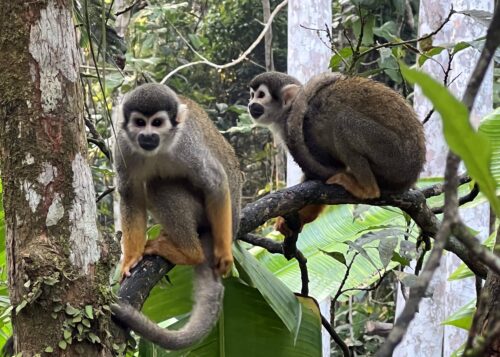
I expected piranhas, caimans, jaguars, anacondas, and any other number of animals that could finish me off along Colombia’s stretch of the Amazon River.
Instead, I saw birds, butterflies, monkeys, spiders, insects, frogs, lizards, and pink dolphins. Rather than the dense, wet Amazonian rainforest I’d imagined, my visit was during the dry season, making the jungle seem actually penetrable. Not that I wanted to venture off.
That was brought home my first night at Calanoa Amazonas an eco-lodge on the banks of Colombia’s Amazon River about a two-hour boat ride from Leticia and its airport.
Palm-Thatched Cabins with Boardwalks
In addition to providing seven palm-thatched cabins connected by raised boardwalks and healthy meals consisting of Amazon River basin fish (like the giant pirarucu) and organic local plants (such as yuca and plantains), it offers daily activities to all staying guests, including a guided nocturnal walk for all newcomers.
After donning tall rubber boots supplied by the lodge and turning on our headlamps (a must in these parts), we followed a local guide on a path through the dark jungle.
A Night Hike Introduction
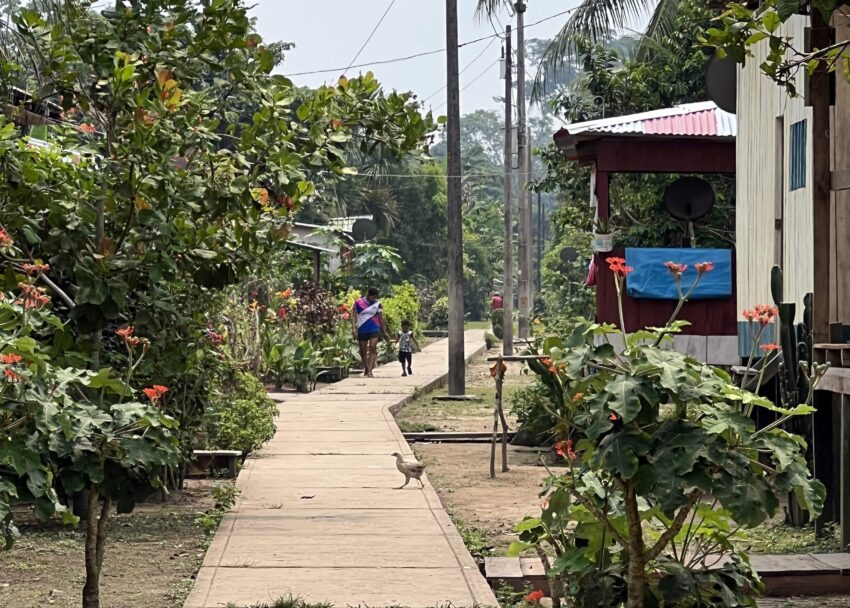
Soon we found ourselves gathered around an innocuous-looking, though rather large, cricket resting on a leaf.
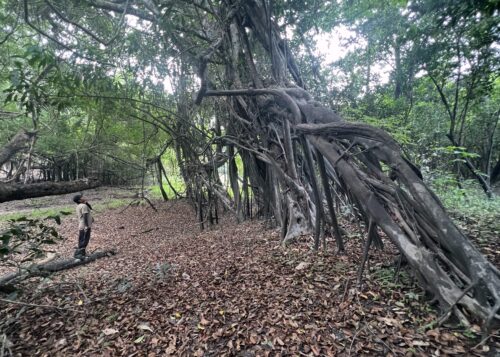
“These crickets can kill birds,” our guide informed us, “but this one is only a baby.”
Yikes! Such was our introduction to the fact that in the rainforest around us, it was the creepy, crawly things that could inflict serious damage or do us in.
Take the gigantic bullet ant, so named because the pain of its bite feels like you’ve been shot. We saw the dangerous black widow, suspended in a nest condo surrounded by dots that would grow to be more black widows. We were shown a banana spider, one of the most poisonous spiders of the jungle.
Tarantulas emerged from holes in the ground to attack prodding sticks wielded by our guide. We gave wide berth to a cute but poisonous tree frog. Our guide warned us that if we tripped and started to fall, we should never reach out and grab a tree or a limb because we never knew what might be there. Instead, I imagined, we were to take our chances being shot by a bullet ant on the ground.
Exploring the Amazon
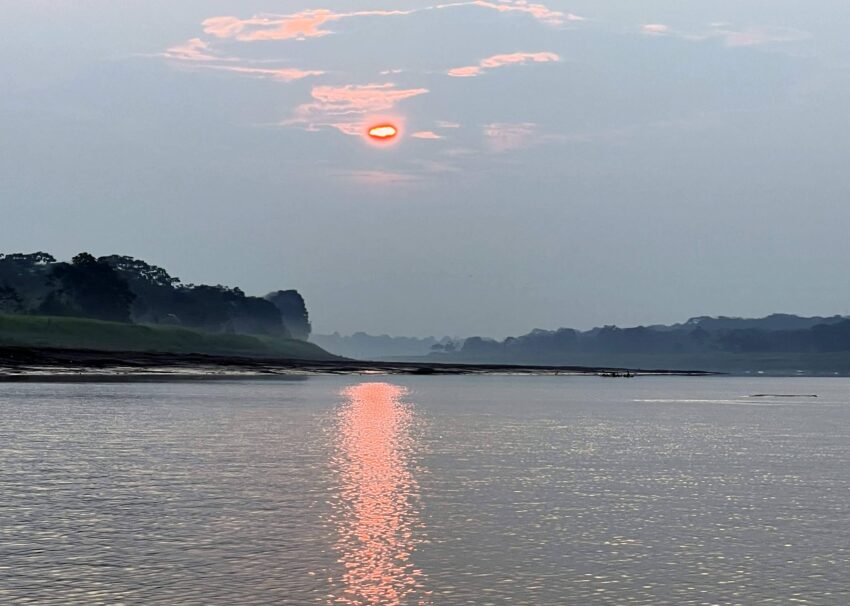
Over the next couple of days we kayaked, visited local indigenous communities, went on day hikes, and crossed over to Peru (Colombia’s small wedge on the Amazon River is sandwiched between Peru and Brazil).
I especially liked the nightly chorus as I lay in the cozy comfort of my canopy bed draped with mosquito nets, listening to insects, birds, frogs, and creatures of the forest I couldn’t identify, awakening in the morning to see monkeys foraging in the treetops.
During the day we saw a wide variety of reptiles, insects and animals, including the mochilero (a bird that weaves hanging bag-like nests for its eggs), a loud bird appropriately called the horned screamer, the vivid Blue Morpho Butterfly, pink dolphins, howler monkeys peeking out from their hole in a tree, and the perpetually busy leaf-cutter ants, which ferry oversized bits of leaves back to their underground colonies to feed their fungal gardens.
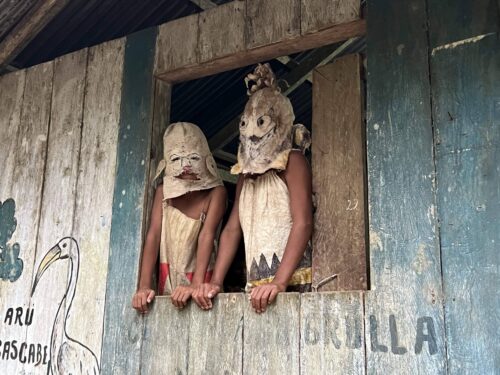
And every morning, a troop of well-behaved spider monkeys descended around the kitchen hut, waiting patiently for a breakfast handout of bananas before disappearing back into the jungle.
Visiting Indigenous Communities in the Amazon
In addition to my preconception that large, predatory animals might be lurking in the forest, I also thought that Calanoa Amazonas would be isolated. Instead, indigenous communities dot the shores of the Amazon River (one of the longest rivers in the world, by the way, second only to the Nile) and its tributaries.
The only way to reach them is by boat. Along the banks, I saw women and girls washing clothes in the river, men washing up, muscled teenagers unloading goods from boats, children playing in the mud, and fishermen returning with their catch.
A Village Called Vergel
In a village called Vergel, we learned that its indigenous Tikuna elders are passing on their cultural heritage by teaching their children traditional songs and dances, which they performed for us. Whereas I sometimes feel that such performances are contrived, these youngsters seemed to actually enjoy themselves.

A 10-minute walk from Canaloa is Mocagua, a tidy town of about 875 people, some of whom are employed at the lodge.
It boasts a school, a museum showcasing traditional items once used in everyday life, and a fledgling tourism industry that includes a community house with an information desk, where I learned the village has two restaurants and five rustic hostels for visitors.
You can also sign up here for nocturnal walks, guided hikes to learn about the area’s flora and fauna, and other activities.
As I walked through town, I saw chickens, dogs lazing in the grass, children making a game of swinging each other in a hammock, and shoes outside the front doors, including brightly colored Crocs. Many of the homes, raised on stilts and with tin roofs, are painted with murals depicting fish, birds, jaguars, and other animals.
Many also have satellite TVs. The highlight for me was stopping at a home that sells drinks and snacks and chatting with three teenage girls, despite my limited Spanish. We had fun at my expense when I resorted to charades trying to come up with the word for “snow.”
Learning about Plants and Trees of the Amazon Rainforest
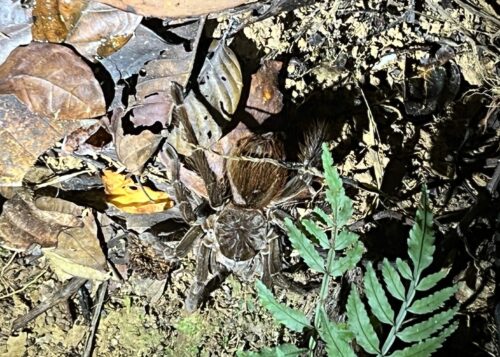
Otherwise, it was the flora that caught my attention, mainly because it doesn’t hide or run away, at least not quickly.
One of the coolest things I saw was the so-called “walking trees,” which set down new aerial roots as they “move” across the jungle floor toward a better, sunnier spot, encircling saplings along the way to zap them of nutrients.
In fact, walking trees could be considered Amazonian celebrities, seeing how Peter Jackson came to research them for his own walking trees in the Lord of the Rings franchise.
Medicinal Plants in the Rainforest
“Everything you need, nature has it if you know how to use it,” said our guide as he showed us medicinal and other useful plants, including rubber trees that provide latex for waterproofing, logs that naturally float and resist rot, and berries, plants and bark that serve as natural dyes.
He pointed out bull blood, an antibiotic used for treating ulcers and other intestinal disorders, to close wounds, and for drying and healing cuts. Acai is an antioxidant useful for treating high cholesterol, diarrhea, joint inflammation and malaria. The capirona tree promotes new skin cells, making it good for the face and for burns and scars. Sour cane helps treat congestion and sore throat. Several trees are said to clean the intestinal tract of bacteria in dirty water.
If you’re lost and thirsty in the rainforest, there’s a specific vine you can hack open for freshwater that pours out like from a faucet. If you’re desperately hungry (and I’d have to be), you can eat termites to stay alive. I’d be more inclined to search for the tree our guide pointed out that, given a hefty thwack, sends out a reverberating boom to broadcast your location.
Naturally, there are also a lot of symbiotic relationships in the rainforest to help it along. If a tree is unhealthy, mushrooms can pop up to aid in its demise and help it die faster, kind of like a death doula for trees. Fruit trees get their start with the aid of brown woolly monkeys, who eat the fruit whole and then eliminate it elsewhere. Macaws eat clay for its salt and mineral content, while the consumption of clay in monkeys helps clean their systems of the poison in certain fruits.
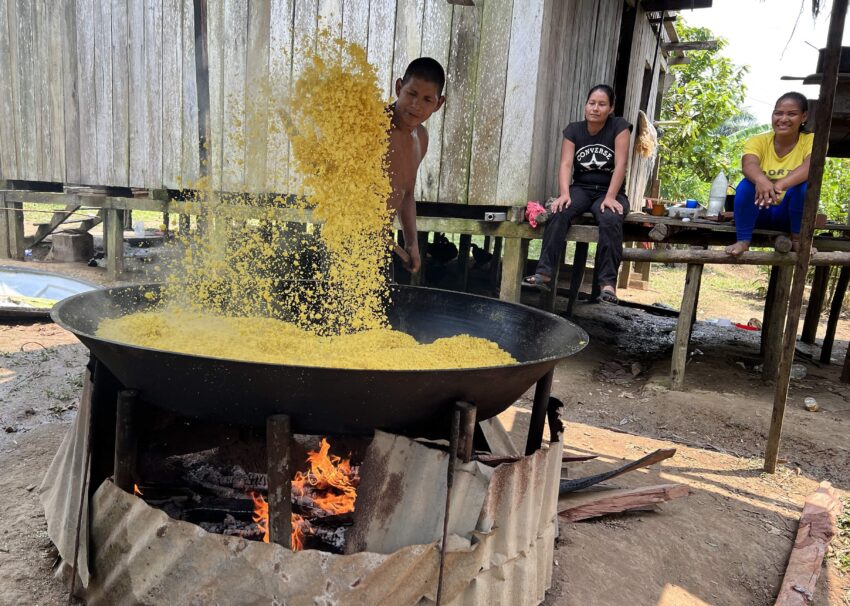
What Makes Colombia Unique
Yet even with all that, we saw only a fraction of what Colombia offers. Calanoa lies on the equator, on the very southern end of a country with 314 types of ecosystems that boast about 10% of the planet’s biodiversity. In fact, Colombia is the second-most bio-diverse country in the world (Brazil is first, not surprising given its much bigger size).
Colombia ranks first in the world in its number of species of birds, orchids, and butterflies. Of its 3,642 species of butterflies, which account for a whopping 20% of butterfly species worldwide), more than 20 species exist only in Colombia.
The Amazon’s Wet and Dry Seasons
It’s also necessary to point out that had I visited the Amazon in its rainy season instead of its dry period, I would have seen a completely different world. During the wet season, rains would have swollen the Amazon River, filled tributaries and lakes, and flooded low forest areas to rid it of underbrush, all necessary for the health of the Amazon.
But the Amazon River I saw in September was obviously very much down, leaving islands in its wake and villages high and dry above towering mud embankments. Instead of taking just one boat from Leticia to Calanoa Amazonas, we had to transfer to a smaller, shallower boat that inched along with the help of a pole pushed into the mud. Then we had to walk a very long, makeshift dock raised above mud flats to the lodge.

But there was one blessing–and it’s a big one–that came with the dry season. Because there is little standing water for them to breed, mosquitoes were almost nonexistent (vaccination against yellow fever is nevertheless a year-round requirement for visitors).
I wondered whether this year’s dry season was drier than usual, so I sent off an email inquiry to artist Diego Samper, who owns Calanoa Amazonas with his wife Marlene but wasn’t able to be there during my visit. According to him, the difference between water levels at their wettest and driest periods used to average 11 meters (about 36 feet). However, the difference this year, Diego replied in his email, “went down several meters below the normal, something not seen before.”
The Effects of Climate Change
At the risk of sounding simple, rainforests need rain to survive. But the rains aren’t what they used to be.
The reasons are complex and many, including rising global temperatures and deforestation of the rainforest and fires, mainly in Brazil. Fewer forests mean fewer trees to absorb carbon, leading to faster rates of climate change and a diminished rain cycle. Thus, whereas the rainy season used to stretch about half the year, from January to June, in Colombia’s Amazon it’s now likely to be shorter and interrupted with dry periods.

And it’s not just Colombia. The vast Amazon rain basin covers an unfathomable 2.7 million square miles through parts of Brazil, Peru, Colombia, Ecuador, Bolivia, and Venezuela.
The Amazon Rainforest, which constitutes about half of the Earth’s remaining rainforest, is home to the most varied biological reserve in the world, much of it still unknown to science.
“A tragedy that is unfolding silently with this ruthless attack on the forest is the disappearance of countless species of plants, animals, and fungi,” Diego wrote in his email.
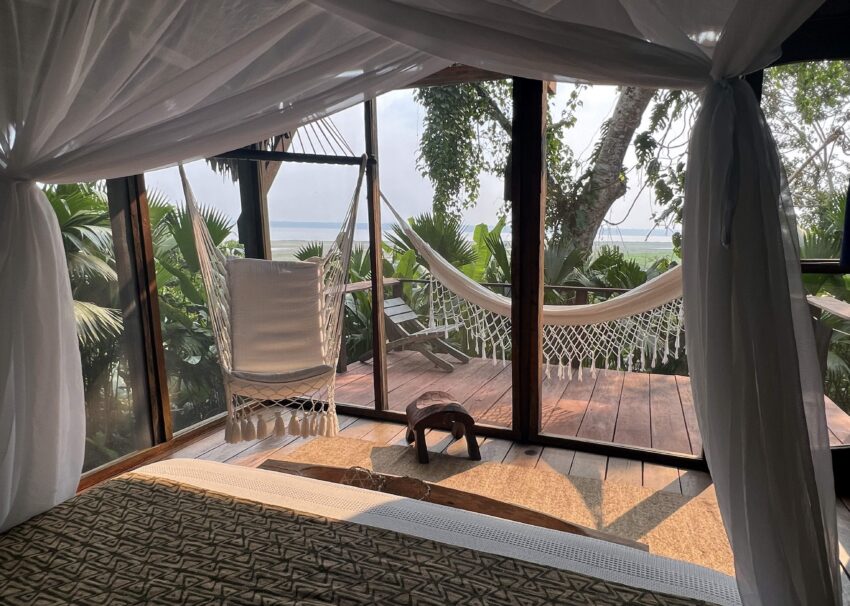
Yet he remains hopeful.
“Calanoa Amazonas is located at the heart of the Amazon basin, with the well-protected Amacayacu National Park at our back and north of the Javary Valley, a huge region between Brazil and Peru, so pristine that several isolated indigenous groups are still living as they have done for thousands of year,” he wrote.
“The forest you visited is still healthy, although the extreme weather conditions might affect ecosystems and populations in a way that we still don’t know.”
And so I think of the miracle plants I saw in Colombia’s Amazon, the monkeys swinging from tree to tree, and yes, even the bullet ants. And what about those isolated indigenous groups Diego mentioned, the children of Vergel, and those three teenage girls?
What, I wonder, will become of them?
- The Land of Lorca in Granada, Spain - August 24, 2023
- Colombia’s Fantastic and Wild Amazon - January 14, 2023
- Greenwood Rising: Tulsa’s Black Wall St. Memorial - May 27, 2021


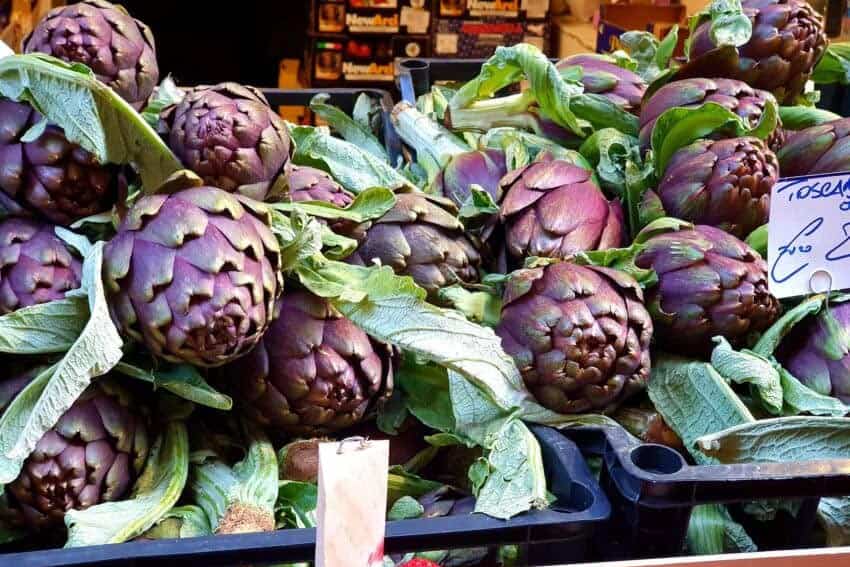

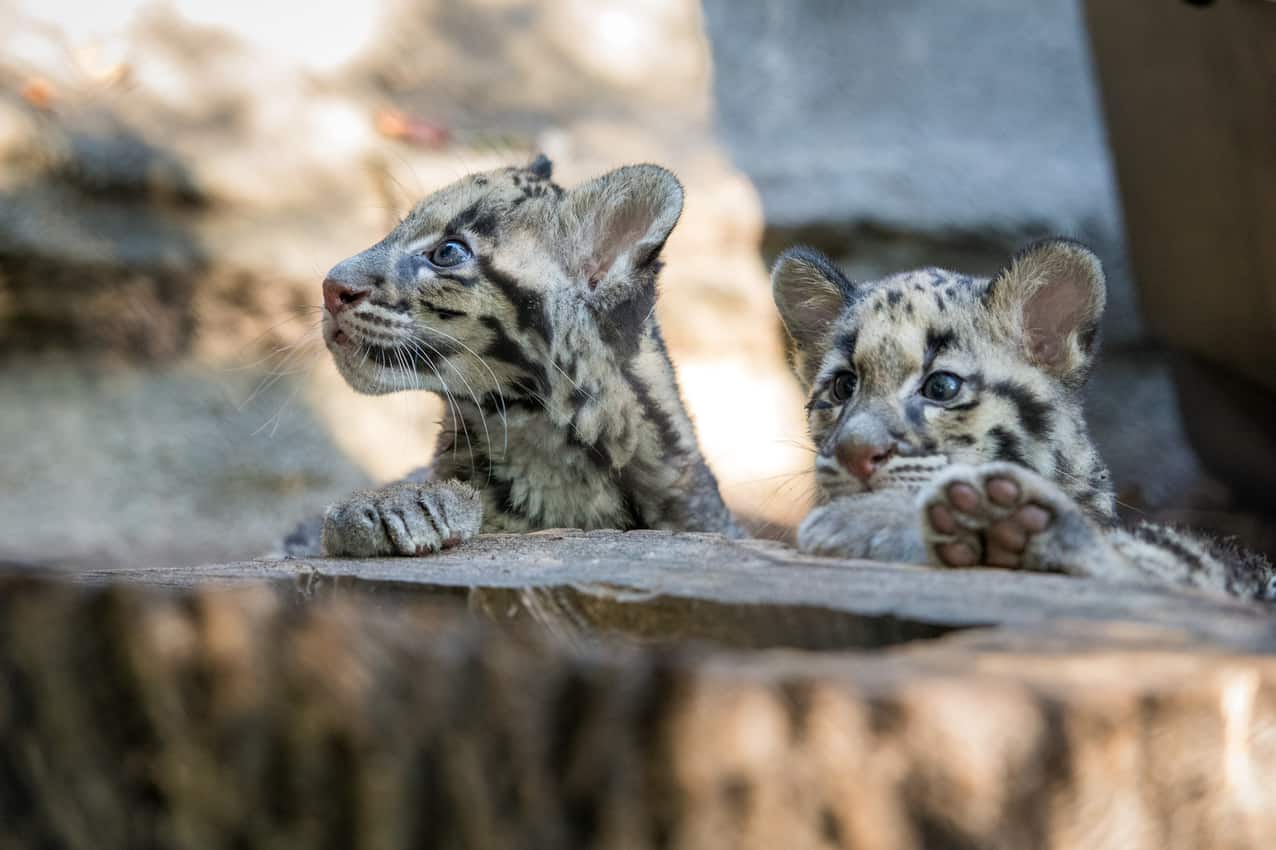

Fascinating. Thanks for sharing.
We are planning a visit to Leticia this December.
Leticia is an interesting small community. Because you are surrounded by so much nature, I hope you take the opportunity to explore surroundings.
thanks, Beth, another stellar piece of writing.
Informative article by a talented writer.